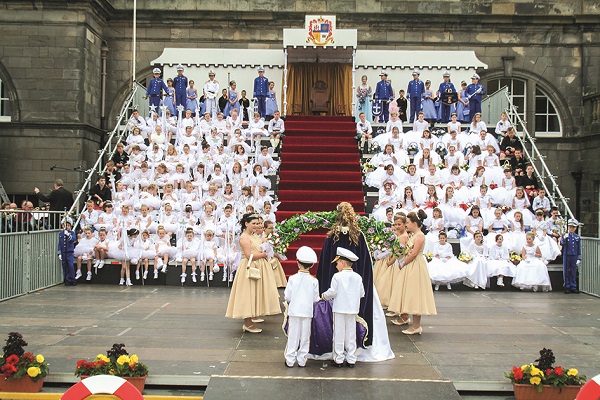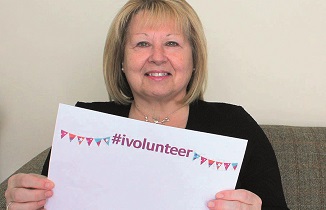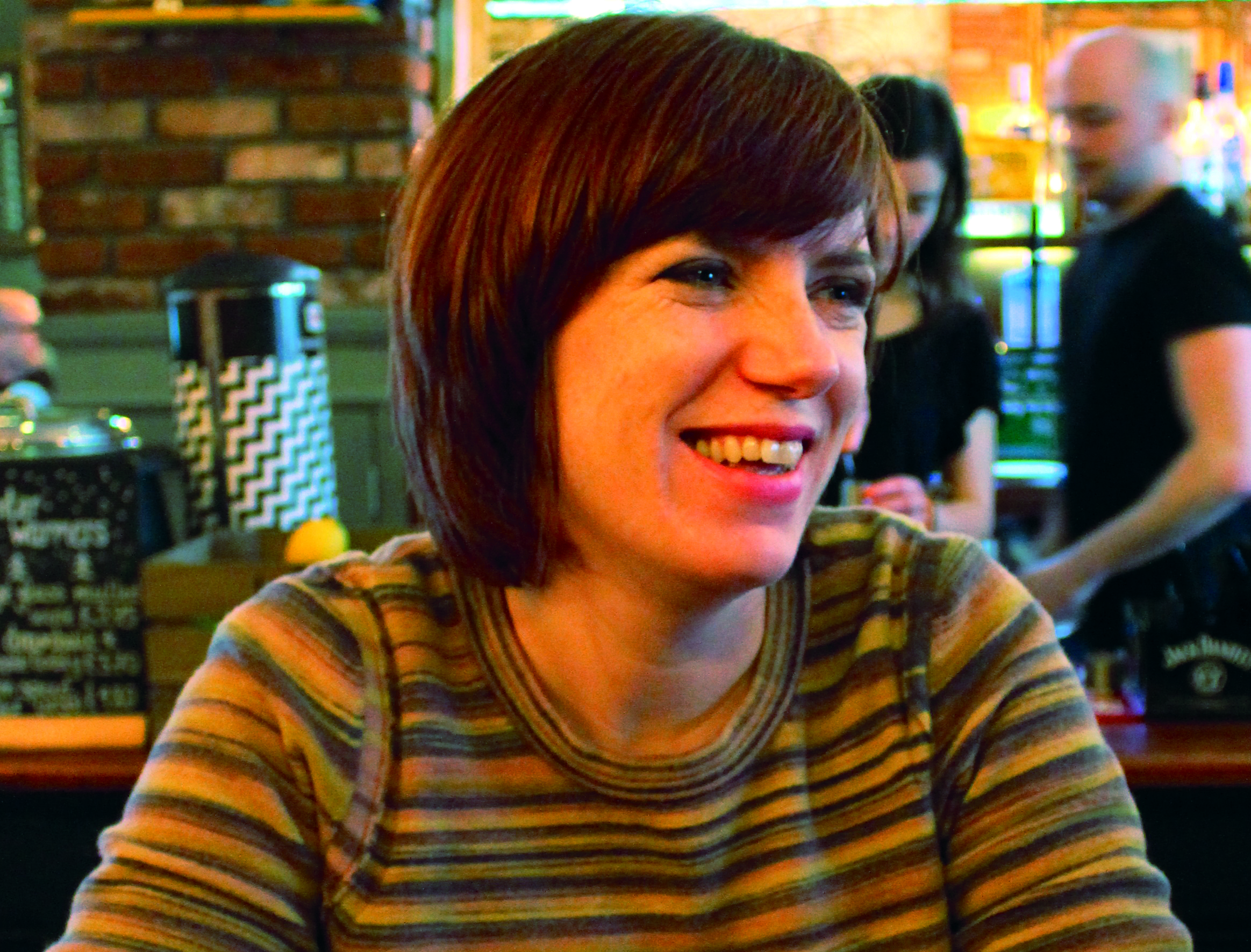Bo’ness on the Forth has one charity for every 100 people, making charities crucial to the success of the former mining town
Bo’ness is a small town, situated on the Forth between South Queensferry and Grangemouth. It’s not a town that enjoys passing traffic; if you’re in Bo’ness, your destination is Bo’ness. So, for many years after the closure of the coal mines in the 1980s, it was a largely forgotten town.
Thirty years later, Bo’ness is still recovering with more than 30% of the working population classed as semi-skilled and unskilled manual. It has more than twice as many people living in deprivation as neighbouring Linlithgow and almost three times as many people living in social housing.
However, it is a thriving hub of voluntary and charitable activity. Around 150 charities and voluntary organisations operate in Bo’ness, turning over £2.5 million a year.
People from across Scotland do make Bo’ness their destination, often because of Thomas the Tank Engine. The Scottish Railway Preservation Society is a volunteer run organisation that is the main attraction to the outside world, with families charmed by a trip back in time on a working steam strain, especially on special days for Thomas fans or the Santa Steam Train at Christmas. Over the years, it’s has attracted royalty, Princess Diana in 1989, and a host of movie stars including Nicole Kidman and Colin Firth, who filmed part of 2013’s The Railway Man there. Not bad for an organisation with an income of just over £1 million and only a single part-time member of staff.
Vic Michel, volunteer chair of the Scottish Railway Preservation Society, said: “Industrial heritage is part of what Great Britain is really all about. I want to keep that story alive and that’s what drives my work here.”
If you ask residents of Bo’ness why they love charity, the first thing most will say is Bo’ness Fair. Scotland’s most extravagant gala day brings the whole town out to check out the arches, which in 2012 included a 9-metre tall replica of Buckingham Palace, and watch the procession. This provides a perfect showcase for the other big Bo’ness passion – brass bands. With a population under 15,000 the town manages to sustain three brass bands, and recently an accordion band too.
Maria Ford, chair of Friends of Kinneil, which runs a museum and supports the historic Kinneil House estate and foreshore in Bo’ness, said: “The Bo’ness people are proud of their town and community, we do not just sit and wait for things to happen here, we pull up our sleeves, fundraise and fight for things to happen. We are a town that will come together when someone or a group in the community need assistance.”
The voluntary cultural and sports sector in the town is also thriving. The reopening of Scotland’s oldest cinema, the Hippodrome, in 2012 and the launch of the Silent Film Festival, which brings even more celebrities to the town, complements the Barony Theatre, one of Scotland’s few surviving entirely volunteer run theatres. Bo’ness United’s football stadium Newtown Park recently moved into community ownership and is now set to become a hub for youth sport and health in the town.
The recently open 134-mile John Muir Way, which stretches across Scotland, runs right through the middle of the old mining site in Bo’ness, which in 2013 was designated a local nature reserve, supported by local and national environment groups.
Churches still play an important role in Bo’ness, providing a range of charitable support for the town’s more vulnerable citizens. Down in the town centre, overlooking the Forth, the Salvation Army’s lunch club is well known for providing physical and social sustenance to the older population. Last year, Bo’ness Storehouse Foodbank launched and is already seeing demand grow and grow.
 Isabel Angus, has been a volunteer with The Vine Trust’s Branches gift shop in Bo’ness for 28 years. Branches raises money for the Vine Trust, an international charity set up from St Andrew’s church in Bo’ness, which now runs education and medical projects in places like Peru and Tanzania.
Isabel Angus, has been a volunteer with The Vine Trust’s Branches gift shop in Bo’ness for 28 years. Branches raises money for the Vine Trust, an international charity set up from St Andrew’s church in Bo’ness, which now runs education and medical projects in places like Peru and Tanzania.
Isabel helps with buying, displaying and selling goods. “I’m one of a few ladies who work here. I like it because it helps get people together,” she explained. “Sometimes people come in, not to buy anything, just for a chat. Then you get talking and by the end you’ve ended up with another volunteer!”
There’s no doubt that the people of Bo’ness are passionate about their charities. From Brownies, Guides, Scouts, first aiders, green groups and more, there are a plethora of people and organisations all helping to ensure that Bo’nessians thrive.
Bo’ness: my town

My name is Maria Ford and I live and volunteer in Bo’ness. I am one of less than 15,000 residents of the town. We have over 60 charitable groups registered in Bo’ness but this is not including the people who are volunteers to individuals and larger charities and groups within our town.
Why is the community action so strong in Bo’ness? I believe that it goes back to our forefathers who were tied to the mines, potteries, iron foundries and harbour. Money was tight, families lived closely and friendship actually saved lives in those days. Families had only one day off a year and they celebrated this by a procession from Kinneil House, the Grange and then through the town.
This procession developed until 1897 when the Bo’ness Council decided to include children. A Queen was chosen and children from schools throughout Bo’ness were chosen to take part as a cast of different characters – a champion, ladies in waiting, fairies, flower girls and presentees to entertain the royal entourage. New clothes were required, but what did that mean? These people could hardly put food on the table.
The community came together and made costumes, built arches out of spare wood and fern from Kinneil woods. Headdresses, wings, wands, baskets of flowers, were all gifted to the children from friends and neighbours to keep the cost down. On the night before the Children’s Fair Festival Day the neighbours would be invited into a child’s home for a cup of tea and cake to view the outfit for the next day. The neighbours would put a shiny penny in the child’s shoe; this was them helping to pay for the outfit. This tradition still continues.
The Bo’ness people are proud of their town and community, we do not just sit and wait for things to happen here, we pull up our sleeves, fundraise and fight for things to happen. We are a town that will come together when someone or a group in the community need assistance. I love staying in this community and I love charity for making it better.







